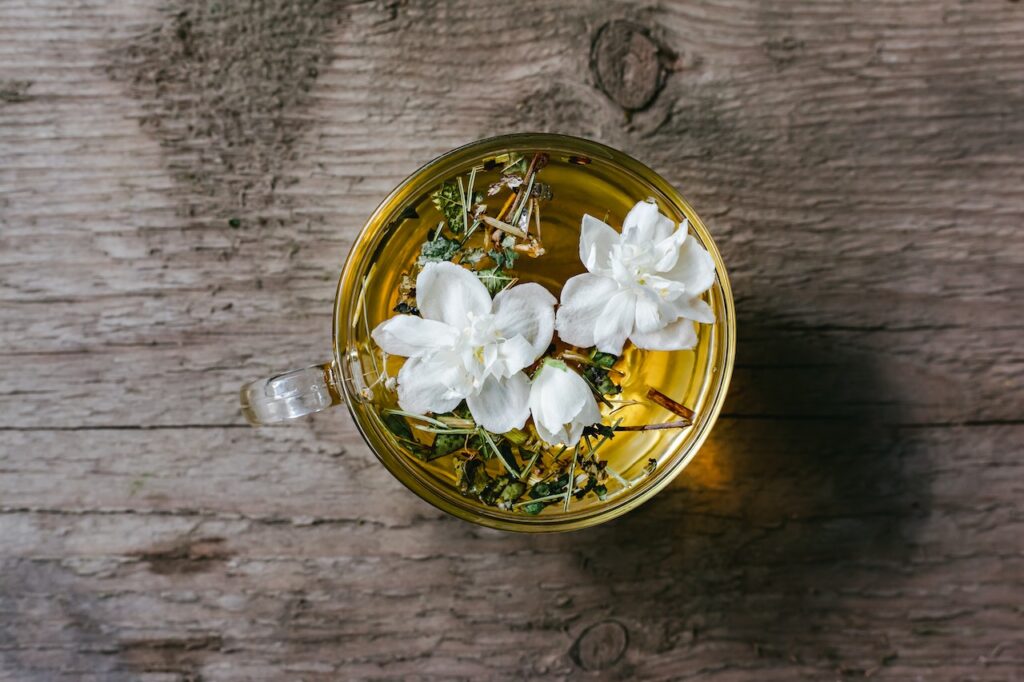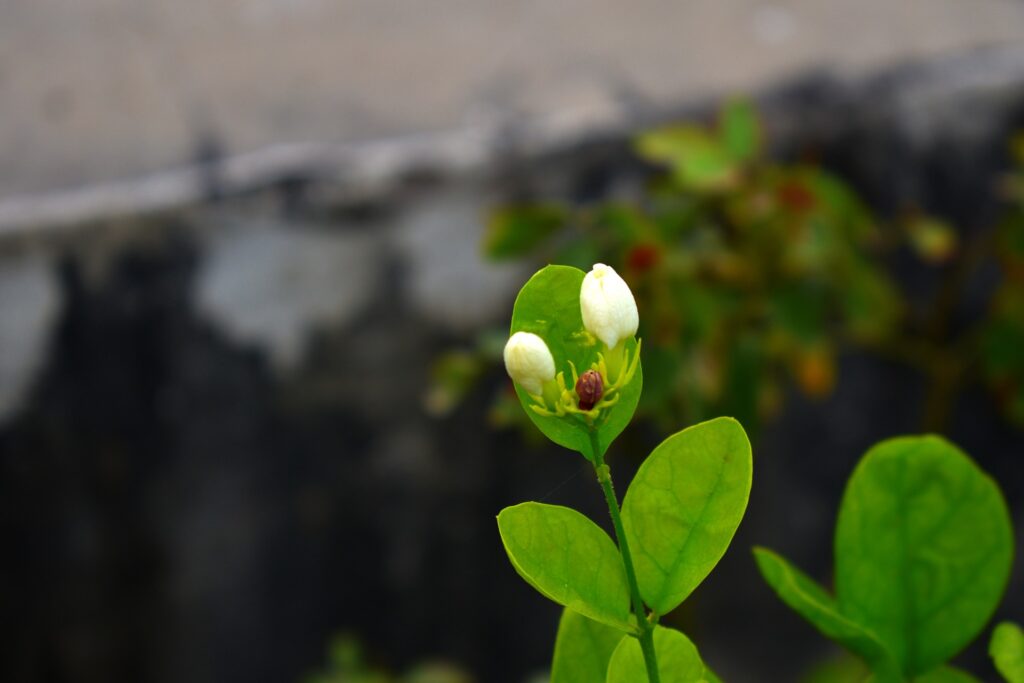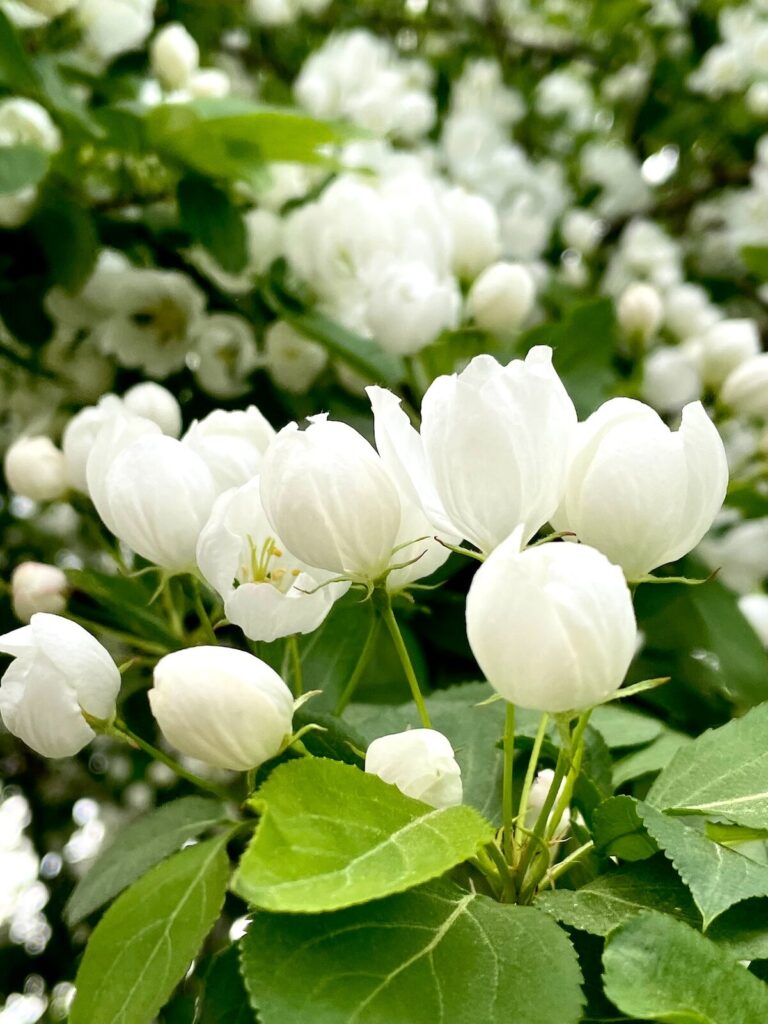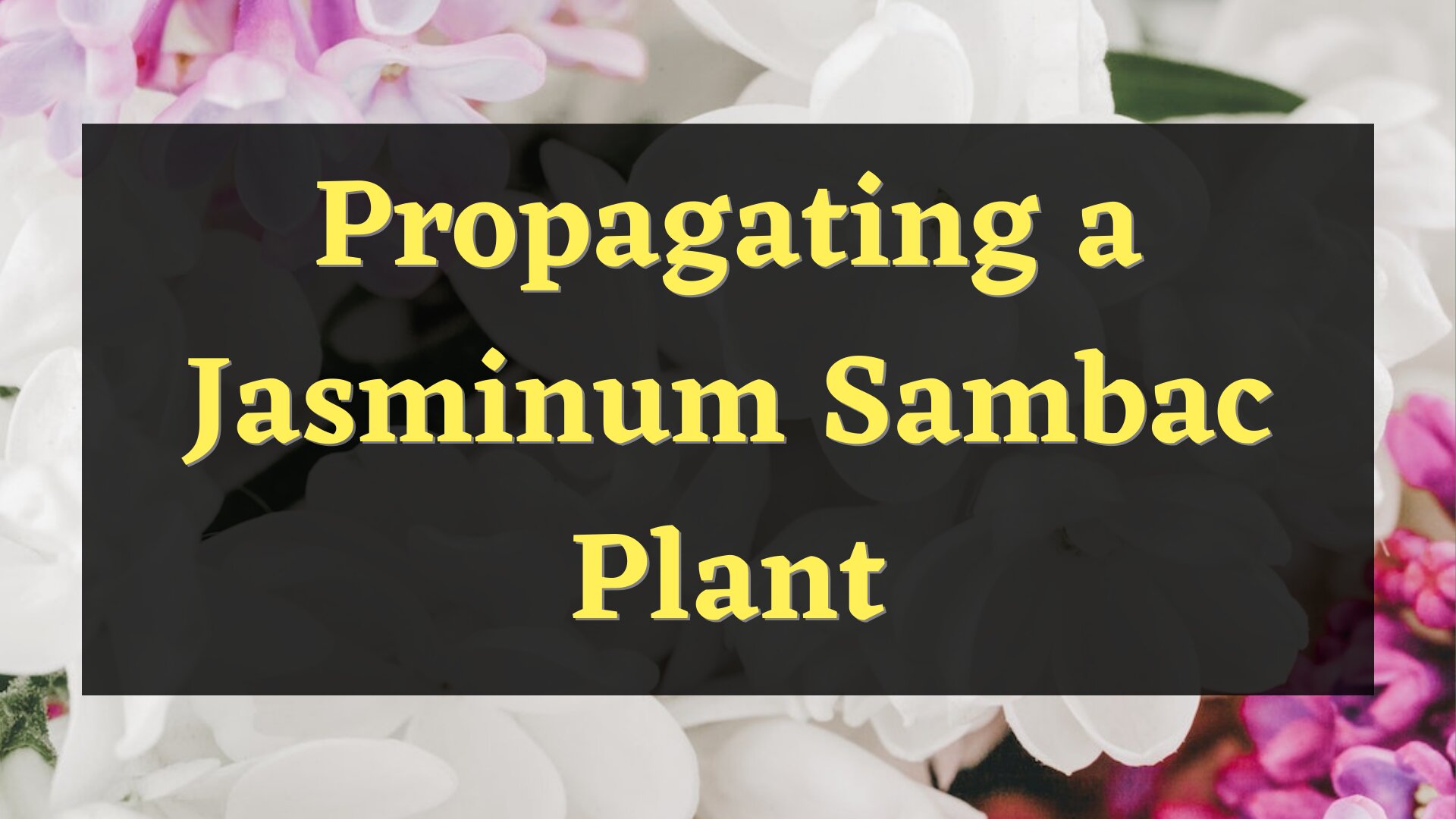Knowing how to propagate Jasminum Sambac properly will increase your plant collection without cost. It can be propagated through cutting and layering. The best season to propagate it is in spring or late summer. Having more Jasminum Sambac will make your surroundings more fragrant in the summer. It easily adapts to the environment that’s why it can be grown as a shrub or vine.
About Jasminum Sambac
Jasminum Sambac is commonly known as Arabian Jasmine and Sambac Jasmine. The other names of this plant are Belle of India, Sampaguita, Grand Duke of Tuscany, Mohle Flower, White-flowered Indian Jasmine, Mogra, Zambac, and Biblical Jasmine.
Jasminum Sambac belongs to the Oleaceae plant family. It is native to tropical Asia and can be grown as a shrub or vine. It produces white fragrant flowers symbolizing simplicity, humility, purity, and strength.
Also, it provides a lot of benefits such as producing essential oils and perfume scents, creating jasmine tea, and making herbs and medicines. They are used as decoration in various ceremonies.

It became a part of the cultures and traditions in Asia. In the Philippines, it is known as Sampaguita, which is the country’s national flower. It is also one of the three national flowers of Indonesia, locally known as Melati Putih.
How to propagate Jasminum Sambac plant
Jasminum Sambac can be propagated from cuttings, air-layering, and ground-layering.
Steps in propagating from cuttings
Cut 4 to 6 inches of stem from a parent plant
Choose a semi-ripe stem from a healthy Jasminum Sambac parent plant. Remove all the flowers on the stem. Take off the leaves on the lower part of the stem and keep 3 to 4 leaves at the top.
Root it on soil or water
Rooting Jasminum Sambac in soil. Put the peat moss or any well-draining potting mix into the pot. Moisten the soil by sprinkling water on it. Dip the cuttings in the rooting hormone to support its root development. Insert the cutting in the holes and pat the soil gently around the stem to keep it steady. Put a plastic bag to lock in the moisture. Removed the plastic bag temporarily each day to let the plant absorb carbon dioxide. Moisten it with water before you cover it again with a plastic bag. Place it in a warm and humid area and wait for it to develop its roots which typically takes 4 to 6 weeks.
Rooting Jasminum Sambac cuttings in water. Dip the cuttings in the rooting hormone to stimulate root development. Put distilled water, rainwater, or tap water without chemicals in a transparent container. Keep the water clean by changing it every 2 to 3 days to prevent the growth of bacteria.
Transplant the cutting
When it starts to develop numerous 1-inch roots, it is ready to transfer to a larger pot or hanging basket.
Monitor it regularly

The amount of water that you will give to the plant depends on the climate. It must be watered more frequently in hot climates and less in cold climates. A potassium fertilizer can be applied once a month to facilitate its growth. If you want to prune it to keep its shape, the best season to do it is in later summer.
Steps in propagating from ground-layering
Create a wound on the stem
Inspect the plant and choose a healthy and semi-ripe stem. Take off the leaves on the part that will be buried. Bent it in a U shape and cut it near the node of the stem.
Cover it with soil
Dip it in a rooting hormone to develop its roots faster. Cover it securely with soil to prevent the stem from popping out.
Transfer it to a pot
It is ready to transplant into a pot when two new pairs of leaves grow. Planted it in a well-draining potting mix that you used on the parent plant.
Steps in propagating from air-layering
Make a wound
Gently make a small cut on the stem near the node.
Cover the wound
Wrap a thick layer of sphagnum moss on the wound of the stem. Put a plastic wrap on the wound to hold the sphagnum moss and lock in the moisture. The plastic wrap will keep a high humidity level on the wound.
Wait for it to develop its roots
The condition of the moss must be monitored regularly. Take off the plastic wrap temporarily when it shows signs of dryness. Moisten the sphagnum moss before you cover it again with plastic wrap.
Remove the stem from the parent plant
Transfer it into a new pot when numerous 1-inch roots are developed. Take care of it the same as you take care of the parent plant.
When do you start propagating Jasminum Sambac?
The three factors that must be considered to start propagating Jasminum Sambac are the season, the condition of the plant, and the time of the day.
The best season to propagate it effectively is in spring and late summer. These are the warm and humid seasons where the roots will develop faster. The ideal temperature for propagating it is 22 degrees Celsius.

The condition of the plant must also be checked before you take cuttings. The parent plant must be healthy and a semi-ripe stem must be used. A mature stem is hard and it will not develop roots faster.
Early morning and late afternoon are the best time to propagate Jasminum Sambac. It will give the plant enough time to absorb water so that it will maintain its temperature throughout the day.
Is it hard to grow Jasminum Sambac?
Growing Jasminum Sambac is not hard. As a tropical plant, it is easier to grow in a humid and warm environment. The right environmental conditions must be maintained to grow it faster. Propagating it using the cutting method and rooting it in the soil is the most effective way to grow it.
Conclusion
In this article, the steps on how to propagate Jasminum Sambac are discussed. It can be propagated through cuttings, air-layering, and ground-layering methods. The cutting method is the easiest and most effective way of propagating it. Rooting it in the soil is more effective than in water because cuttings absorb more nutrients in the soil that are necessary for its growth. Increasing your Jasminum Sambac collection will give you a more fragrant environment in summer.

Elizabeth Mcmillan is a passionate gardener with a strong interest in plants. She used to be a teacher, but Elizabeth has spent the last few years immersing herself in the world of plants, learning about their biology and cultural value and trying out different ways of growing them in her own garden. Elizabeth Mcmillan loves indoor plants, succulents, and cacti, and her friends and family know her as a plant care expert.







